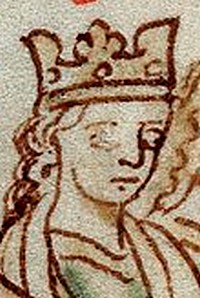Lord Treasurer of Ireland
He was chosen as Lord Treasurer of Ireland in 1292, [1] and before going to Ireland that summer he had detailed discussions with officials of the English Exchequer about the state of the Irish Treasury. These discussions resulted in a royal ordinance bringing the practice of the Exchequer of Ireland into line with that of the Exchequer at Westminster. [2] Soon after his arrival in Ireland the King granted him the manor of Chapelizod, in south Dublin. He also received a knighthood. [2] His salary was £40 per annum, the standard salary then for senior officials and judges.
In 1293 he was appointed to head a royal commission to inquire into the numerous complaints of maladministration which had been made against the Justiciar of Ireland, William de Vesci, [3] with instructions to report back to the Crown by the following spring. [3] He travelled to England in April 1294 to report his findings in person to the King and Parliament. [3] He also sat on a committee of three to find a suitable replacement as Justiciar, after de Vesci was removed from office: [2] they chose Sir Walter de la Haye, the Chief Escheator of Ireland, who like Essendon had been a member of the commission of inquiry into de Vesci's conduct. (William fitz Roger, Prior of Kilmainham, who frequently acted as an itinerant justice, had been acting Justiciar in the interim). De Vesci was eventually restored to royal favour, but did not regain office as Justiciar; he died in 1297.
After 1294 Essendon was mainly occupied as Lord Treasurer with finding money to finance the King's wars with France and Scotland, and received royal thanks for his efforts. [2] He witnessed a royal charter of no great importance, in 1299. [4] In January 1300 he with the Justiciar of Ireland and the Lord Chancellor of Ireland was charged with selecting 300 hobelars (light cavalry) to send to the King at Carlisle by Midsummer Day, and to purvey sufficient food and wine for them. [5] Part of the Exchequer Receipt Roll (the daily list of payments into the Exchequer) from 1295 survives, naming him as Treasurer. [6]
Later years
He stepped down as Treasurer in 1300, but served a second term in 1304–5. [1] The Exchequer records show that in 1304 Master William de Wymondham, the Keeper of the Royal Exchanges at London and Canterbury, sent him a large quantity of silver and a number of stamps for coining money from the silver. [7]
He was still alive in 1314 when Master William de la Ryvere appointed him as his attorney. [8] De la Ryvere was a senior Crown servant who in 1309-10 had acted as the English envoy to the powerful Irish chieftain Gilla Isu Ruad O'Reilly to ensure his neutrality in the forthcoming clash between the English and another branch of the O'Reilly clan. Essendon's instructions were to act for De la Ryvere in a lawsuit for debt in the Court of Exchequer (Ireland) against the Prior of the Holy Trinity, Dublin. [8]
In an age when Irish Crown officials were regularly accused of incompetence, maladministration and corruption, [9] Essendon enjoyed an enviable reputation for efficiency and honesty. [2]
John FitzThomas was an Anglo-Norman in the Peerage of Ireland, as 4th Lord of Offaly from 1287 and subsequently as 1st Earl of Kildare from 1316.
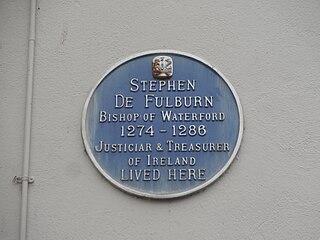
Stephen de Fulbourn was an English-born cleric and politician in thirteenth-century Ireland: he was Justiciar of Ireland, and Archbishop of Tuam 1286–88. He was a member of the Order of Knights Hospitallers.
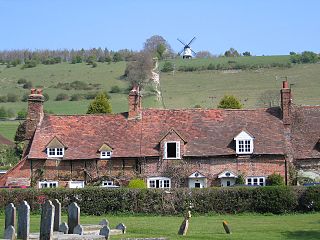
Geoffrey de Turville or de Tourville was an English-born judge and cleric in thirteenth-century Ireland, who held office as Bishop of Ossory and Lord Chancellor of Ireland, and was noted as an extremely efficient administrator. His career has been described as an excellent example of what a clerk in the royal service in that era might hope to accomplish.
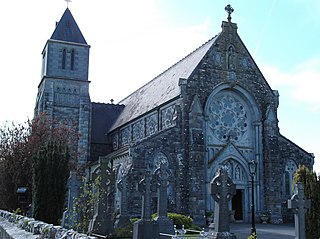
Thomas Cantock, Quantock or Cantok was an English-born cleric and judge in medieval Ireland, who held the offices of Bishop of Emly and Lord Chancellor of Ireland.
Sir John Morice, Morris or Moriz was an English-born statesman of the fourteenth century whose career was mainly spent in Ireland. He is remembered chiefly for his enthusiastic, if not very successful, efforts to reform the Irish administration, and for the fact that a portrait of him still exists. This is said to be the earliest portrait of an Irish judge and can be viewed by the public.
Walter de Thornbury was an English-born statesman and cleric who held the office of Lord Chancellor of Ireland in the 14th century. His efforts to secure confirmation of his election as Archbishop of Dublin ended in tragedy with his death in a shipwreck.
John L'Archers, Larger or L'Archer was an English-born cleric and judge who had a distinguished career in Ireland, holding the offices of Lord Chancellor of Ireland and Deputy Justiciar. He died during the first outbreak of the Black Death in Europe and was probably a victim of it.
Sir Robert Bagod was an Irish judge who was appointed the first Chief Justice of the Irish Common Pleas in 1276. He built Baggotrath Castle, which was the strongest fortress in Dublin: it was located on present-day Baggot Street in central Dublin. He also founded the Carmelite Friary in Dublin.

William de Vesci or Vescy was a prominent 13th-century noble. He was a son of William de Vesci and his second wife Lady Agnes de Ferrers, daughter of William de Ferrers, 5th Earl of Derby, and his first wife Sibyl Marshal.
Nicholas de Balscote was an English-born official and judge in fourteenth-century Ireland. He attained high judicial office, but his career was damaged by a quarrel with King Edward II.
John de Burnham, or John Brunham was an English-born cleric, judge and Crown official who spent much of his career in Ireland. He held office as Lord High Treasurer of Ireland and Chief Baron of the Irish Exchequer. He spent many years defending himself against charges of corruption, which seem to have been the invention of malicious colleagues.
Robert de Holywood was an Irish judge and landowner who held the office of Chief Baron of the Irish Exchequer. He was the ancestor of the Holywood family of Artane Castle, and of the St. Lawrence family, Earls of Howth. He was a substantial landowner with property in Dublin, Meath and Louth. He became extremely unpopular, and was removed from office after numerous complaints of "oppression and extortion" were made against him. These were apparently inspired ĺargely by his close association in the mid-1370s with Sir William de Windsor, the embattled Lord Lieutenant of Ireland.
William Chevir, or Chevyr was an Irish politician and judge, whose career was marked by accusations of oppression and corruption.
John de Ponz, also called John de Ponte, John Savan, or John of Bridgwater (c.1248–1307) was an English-born administrator, lawyer and judge in the reign of King Edward I. He served in the Royal Household in England for several years before moving to Ireland, where he practised in the Royal Courts as the King's Serjeant-at-law (Ireland). He later served as a justice in eyre, and then as a justice of the Court of Common Pleas (Ireland). He was a gifted lawyer, but as a judge was accused of acting unjustly. A case he heard in Kilkenny in 1302 can be seen as a precursor of the Kilkenny Witchcraft Trials of 1324, and involved several of the main actors in the Trials.
Hugh Canoun, or Hugh Canon was an English-born judge in early fourteenth-century Ireland. He was a justice of the Court of Common Pleas (Ireland) and served as Deputy Justiciar of Ireland. As a judge he was praised for his good and faithful service to the English Crown, and as a lawyer he was known as "a man very knowledgeable about all the King's business". On the other hand, his loyalty to the Crown during the Scottish Invasion of Ireland in 1315-18 was said to be extremely doubtful, although he was saved from disgrace by his influential connections. He was murdered by Andrew de Bermingham of Athenry in 1317/18, during the last months of the Bruce Invasion, in the course of a private feud, of which little is known.
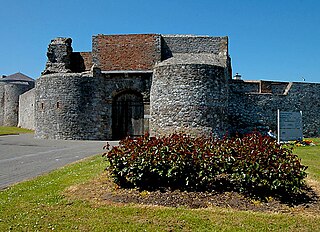
Sir Walter de la Haye or de Haye was an English-born statesman and judge in Ireland of the late thirteenth and early fourteenth centuries, who served for many years as Sheriff of County Waterford and as Chief Escheator of Ireland, and briefly as Justiciar of Ireland.
William fitz Roger was an Anglo-Norman cleric, judge and Crown official in late thirteenth-century Lordship of Ireland. He was Prior of the Irish House of the Knights Hospitallers at Kilmainham, and served as a Privy Councillor and as a justice in eyre. He led several military expeditions, but was a notoriously incompetent commander, whose campaigns invariably ended in failure. He served as Deputy Justiciar in 1284-5, and as acting Justiciar of Ireland in 1294.

Nicholas Cusack was a thirteenth-century Bishop of Kildare and member of the Franciscan Order.

John Brettan or Breton was an Irish judge and Crown official. His petitions to the Irish Privy Council, of which he wrote five between 1376 and 1382, and which have survived ; cast a valuable light on the disturbed condition of English-ruled Ireland in the late fourteenth century, and especially the situation in Carlow, his home town, which was the effective seat of English government in the latter half of the fourteenth century.
Sir Thomas Fitzadam was a leading Irish administrator and judge during the reigns of King John and his son Henry III of England. He held a wide variety of official positions, including military commander, Constable of Dublin Castle, Chief Escheator of Ireland and Chief Forester of the Royal Forest of Glencree. He was one of the first three judges to be appointed an itinerant justice in Ireland.

